Every packaging designer knows the feeling. That cold dread when a client approves a beautiful flat design, and you realize you now have to fake it.
You spend hours in Photoshop, wrestling the Warp Tool into submission, trying to force a 2D label onto a 3D surface it was never meant to touch. It’s less of a design process and more like digital prayer, hoping it looks plausible.
Here’s the thing about traditional mockups: they're a well-intentioned lie. They can't tell the real story of how light will kiss a metallic foil, or how a logo will truly sit on a curved glass surface. This guide isn't about finding a better way to lie. It's about finding the best tools to tell the truth. We'll explore the platforms built for the unique, demanding world of packaging—and discover how to get from concept to a convincing, photorealistic final product, faster.
The 5 Best 3D Rendering Tools for Packaging Designers
We're diving straight into the platforms that deliver, judged on their ability to handle labels, materials, and the rapid-fire iteration modern packaging projects demand.
1. Realishot: The Collaborative, Cloud-Native Workflow Engine
While other tools are simply digital cameras, Realishot is the entire photo studio, creative agency, and client meeting room, all living in your web browser. It is the only platform built from the ground up to solve the entire packaging workflow, not just the final render. It masters not only the image but the process, which, as any designer knows, is where the real work happens.
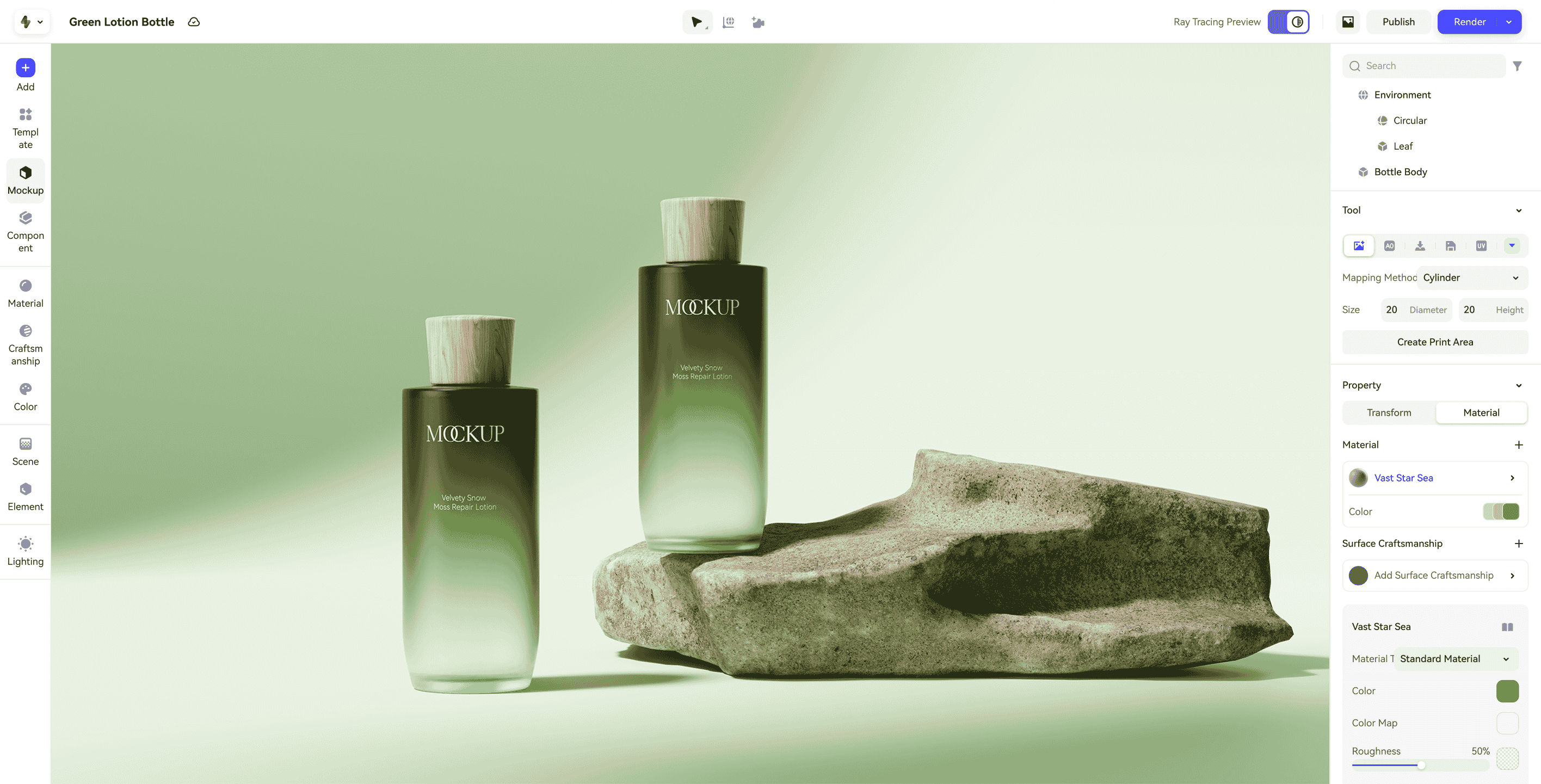 Realishot's clean, web-based interface for packaging design
Realishot's clean, web-based interface for packaging design
 My Experience: The first time I used Realishot's Figma integration, it felt like magic. I changed a color on my 2D label design in Figma, and a second later, the 3D bottle in my browser updated to match. That five-second action replaced what used to be a 15-minute process of exporting, re-importing, and re-applying textures. It was a career-changing moment that permanently altered how my team approaches revisions.
My Experience: The first time I used Realishot's Figma integration, it felt like magic. I changed a color on my 2D label design in Figma, and a second later, the 3D bottle in my browser updated to match. That five-second action replaced what used to be a 15-minute process of exporting, re-importing, and re-applying textures. It was a career-changing moment that permanently altered how my team approaches revisions.
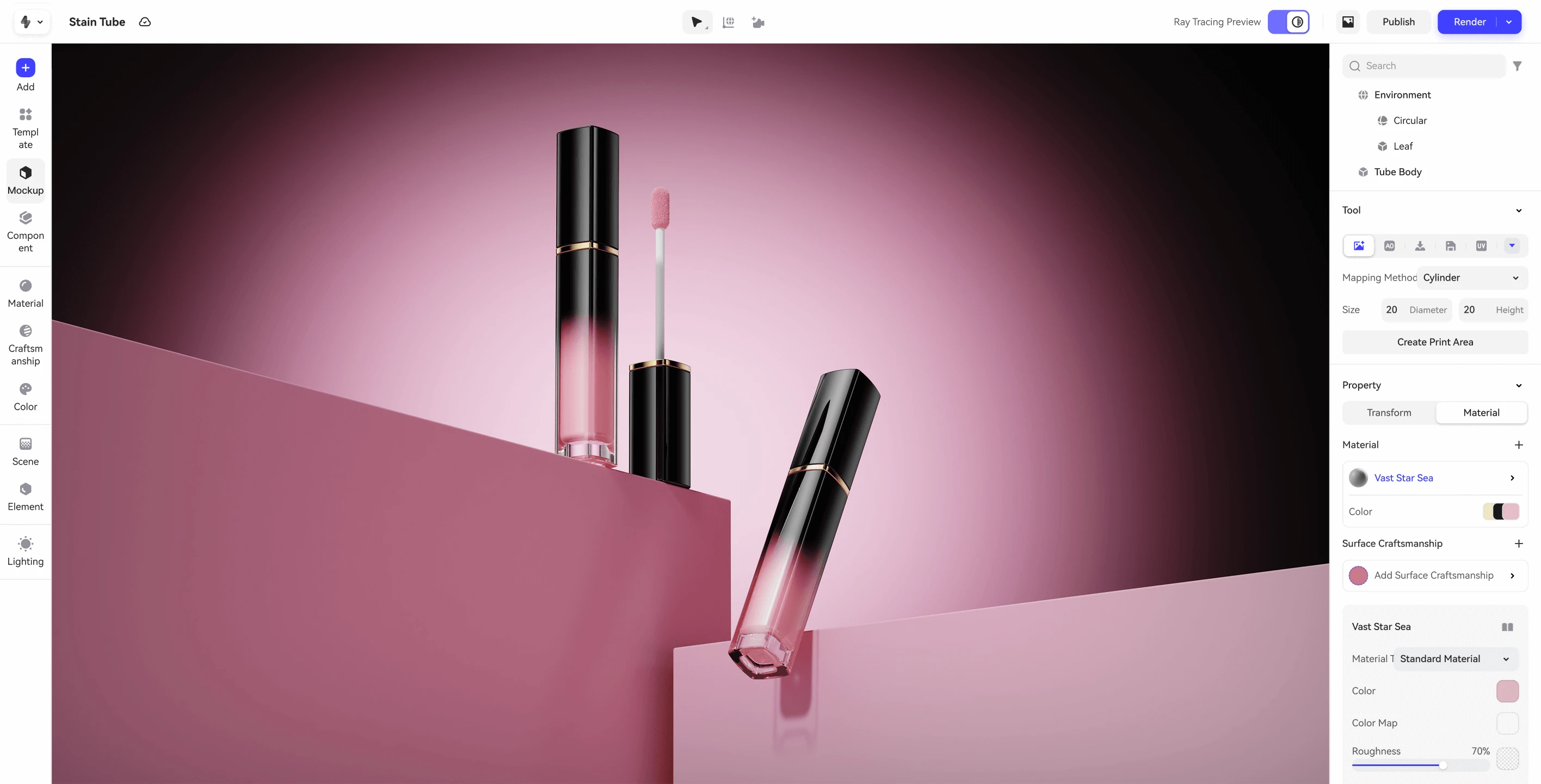 Realishot-Lip-Tint-Packaging-Design
Realishot-Lip-Tint-Packaging-Design
 Key Advantages for Packaging:
Key Advantages for Packaging: The Ultimate Labeling Solution: The seamless, real-time Figma integration is the best in the business. It completely eliminates the nightmare of UV mapping and warping flat designs.
The Ultimate Labeling Solution: The seamless, real-time Figma integration is the best in the business. It completely eliminates the nightmare of UV mapping and warping flat designs. Mastering Complex Materials, Simply: Creating a metallic foil, a spot UV varnish, or the subtle translucency of a cosmetic liquid can be a technical nightmare in other software. Realishot simplifies this with a library of intelligent, physically-based materials and lighting presets designed specifically for product photography.
Mastering Complex Materials, Simply: Creating a metallic foil, a spot UV varnish, or the subtle translucency of a cosmetic liquid can be a technical nightmare in other software. Realishot simplifies this with a library of intelligent, physically-based materials and lighting presets designed specifically for product photography. A Library of Smart Mockups: Its extensive mockup library isn't just a collection of models; they are parametric templates. You can instantly create a consistent look across an entire product family—a bottle, a box, and a tube—without starting from scratch each time.
A Library of Smart Mockups: Its extensive mockup library isn't just a collection of models; they are parametric templates. You can instantly create a consistent look across an entire product family—a bottle, a box, and a tube—without starting from scratch each time. Collaboration That Actually Works: Instead of emailing massive, static image files, you send a single web link. Your client and team can orbit, inspect, and leave annotated feedback directly on the 3D model. This has cut my team's revision cycles in half.
Collaboration That Actually Works: Instead of emailing massive, static image files, you send a single web link. Your client and team can orbit, inspect, and leave annotated feedback directly on the 3D model. This has cut my team's revision cycles in half.
How Realishot Compares to Other Packaging Tools
This table puts Realishot’s core strengths into sharp focus against its main competitors on the criteria that matter most to packaging designers.
| Feature | Realishot | KeyShot | Substance Stager | Pacdora |
|---|---|---|---|---|
| Render Quality | Excellent (Ray Tracing) | Excellent (Ray Tracing) | Excellent (Ray Tracing) | Basic (No Ray Tracing) |
| Ease of Use | Excellent (Easiest) | High | Medium | Excellent |
| 2D Label Integration | Excellent (Live Figma Link) | Good (Manual Import) | Excellent (Adobe Link) | Good (Manual Upload) |
| Collaboration | Excellent (Web-Based) | Poor (File-Based) | Poor (File-Based) | Fair (Web-Based) |
| Mockup Library | High-Quality & Parametric | Basic | Basic | Massive & Varied |
2. Luxion KeyShot: The Desktop King of Speed and Simplicity
KeyShot is the established industry standard for fast, high-quality desktop rendering, and it has earned its crown. Its legendary drag-and-drop workflow makes it incredibly easy to create a beautiful image with minimal technical fuss.
-5al51z.jpeg) KeyShot's intuitive desktop interface for product visualization
KeyShot's intuitive desktop interface for product visualization
 My Experience: For years, KeyShot was my go-to for any product shot. Its real-time viewport is a joy to work with, and its material accuracy is top-notch. It's a fantastic tool for a solo designer needing to produce stunning visuals quickly.
My Experience: For years, KeyShot was my go-to for any product shot. Its real-time viewport is a joy to work with, and its material accuracy is top-notch. It's a fantastic tool for a solo designer needing to produce stunning visuals quickly. Key Strength for Packaging: Speed and material realism. Its library of scientifically accurate materials makes dialing in the perfect plastic or glass look incredibly fast.
Key Strength for Packaging: Speed and material realism. Its library of scientifically accurate materials makes dialing in the perfect plastic or glass look incredibly fast. Strategic Limitation: It's a powerful workshop for one, but it is fundamentally a desktop silo. The workflow is offline, and sharing work for feedback reverts to the old-fashioned "export, upload, email" dance, which feels cumbersome after experiencing Realishot’s seamless web-based collaboration.
Strategic Limitation: It's a powerful workshop for one, but it is fundamentally a desktop silo. The workflow is offline, and sharing work for feedback reverts to the old-fashioned "export, upload, email" dance, which feels cumbersome after experiencing Realishot’s seamless web-based collaboration.
3. Adobe Substance 3D Stager: The Ecosystem Champion
For designers who live and breathe the Adobe Creative Cloud, Substance 3D Stager is a compelling and powerful choice. Its primary advantage is its seamless, native integration with the tools you already use every day.
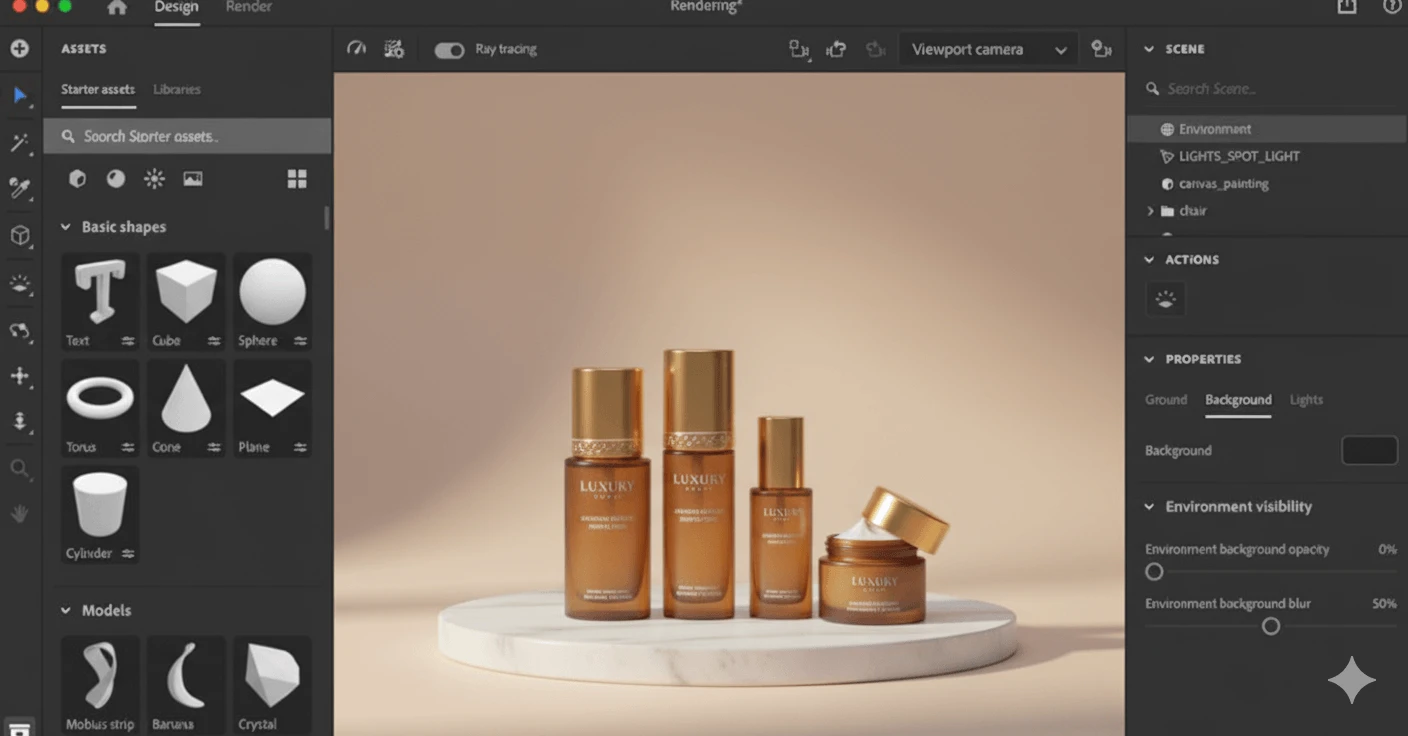 Adobe Substance Packaging Design
Adobe Substance Packaging Design
 My Experience: If you're designing your labels in Illustrator and your box art in Photoshop, Stager's ability to sync those assets directly is a huge time-saver. The integration with the vast Substance 3D Assets material library is another massive plus.
My Experience: If you're designing your labels in Illustrator and your box art in Photoshop, Stager's ability to sync those assets directly is a huge time-saver. The integration with the vast Substance 3D Assets material library is another massive plus. Key Strength for Packaging: Flawless Adobe workflow integration. Dragging a vector from Illustrator directly onto your model as a decal feels incredibly smooth.
Key Strength for Packaging: Flawless Adobe workflow integration. Dragging a vector from Illustrator directly onto your model as a decal feels incredibly smooth. Strategic Limitation: While powerful, it can feel like one component of a larger, more complex ecosystem rather than an all-in-one solution. The workflow, while integrated, is still rooted in the traditional desktop paradigm and lacks a native collaborative layer.
Strategic Limitation: While powerful, it can feel like one component of a larger, more complex ecosystem rather than an all-in-one solution. The workflow, while integrated, is still rooted in the traditional desktop paradigm and lacks a native collaborative layer.
4. Boxshot: The Specialist for Simple Shapes
Boxshot carves out a fantastic niche by focusing on doing one thing exceptionally well: creating realistic mockups of common packaging shapes with incredible speed and simplicity.
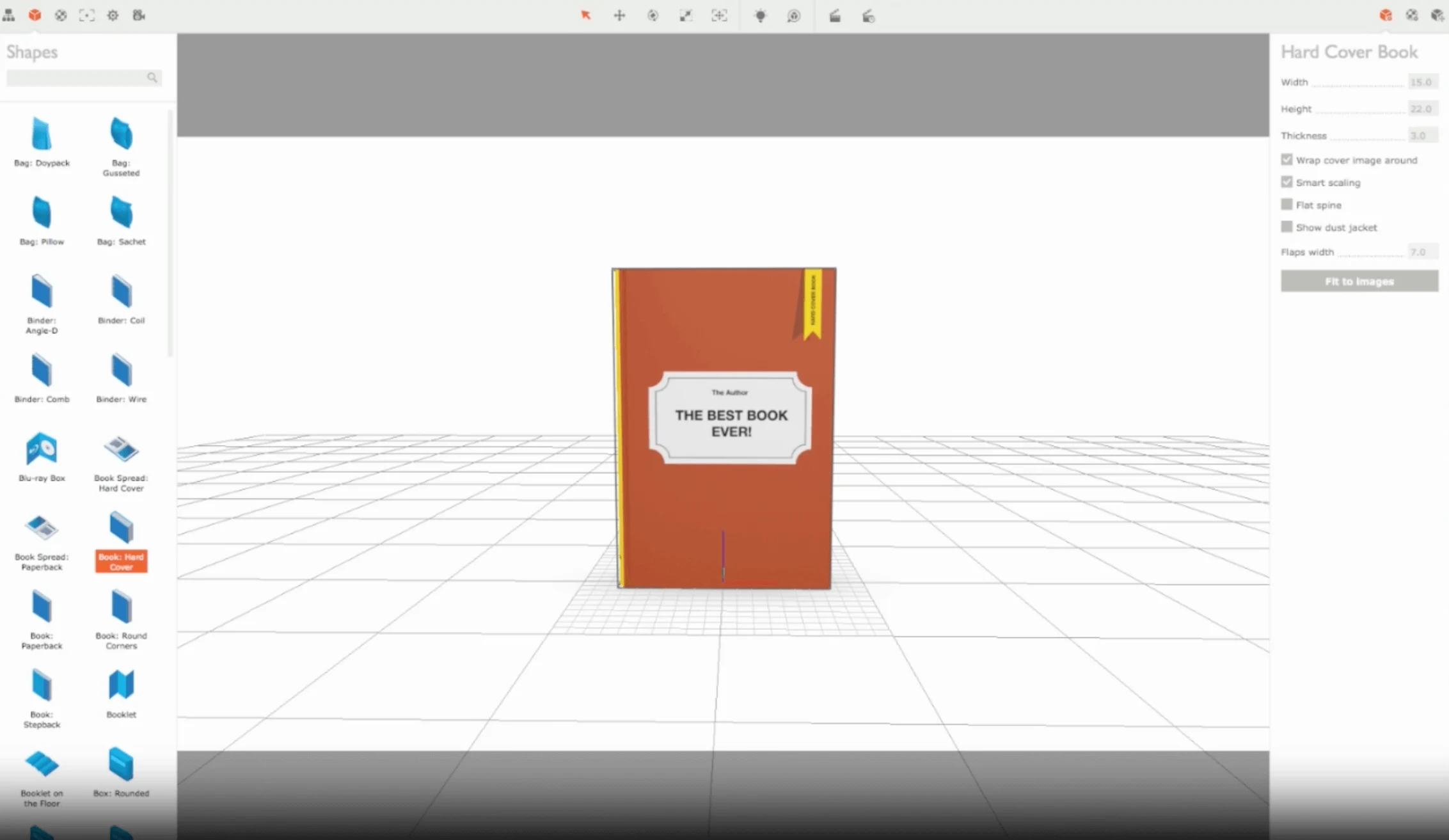 Boxshot Packaging Design
Boxshot Packaging Design
 My Experience: When a client needed a quick visual of a standard software box or a paperback book, I've turned to Boxshot for a super-fast turnaround. Its library of pre-built, adjustable shapes is its killer feature.
My Experience: When a client needed a quick visual of a standard software box or a paperback book, I've turned to Boxshot for a super-fast turnaround. Its library of pre-built, adjustable shapes is its killer feature. Key Strength for Packaging: A deep library of parametric, ready-to-go packaging templates. You can create a convincing visual of a standard box or bottle in minutes.
Key Strength for Packaging: A deep library of parametric, ready-to-go packaging templates. You can create a convincing visual of a standard box or bottle in minutes. Strategic Limitation: Its strength is also its weakness. For highly custom, unique, or organic packaging structures, you'll hit the limits of its template-based approach and need a more flexible tool like Realishot or KeyShot.
Strategic Limitation: Its strength is also its weakness. For highly custom, unique, or organic packaging structures, you'll hit the limits of its template-based approach and need a more flexible tool like Realishot or KeyShot.
5. Pacdora: The Rapid Mockup Generator
Pacdora is a web-based tool with a singular, powerful focus: providing a massive library of mockups for rapid ideation and presentation. It is built for speed and variety above all else.
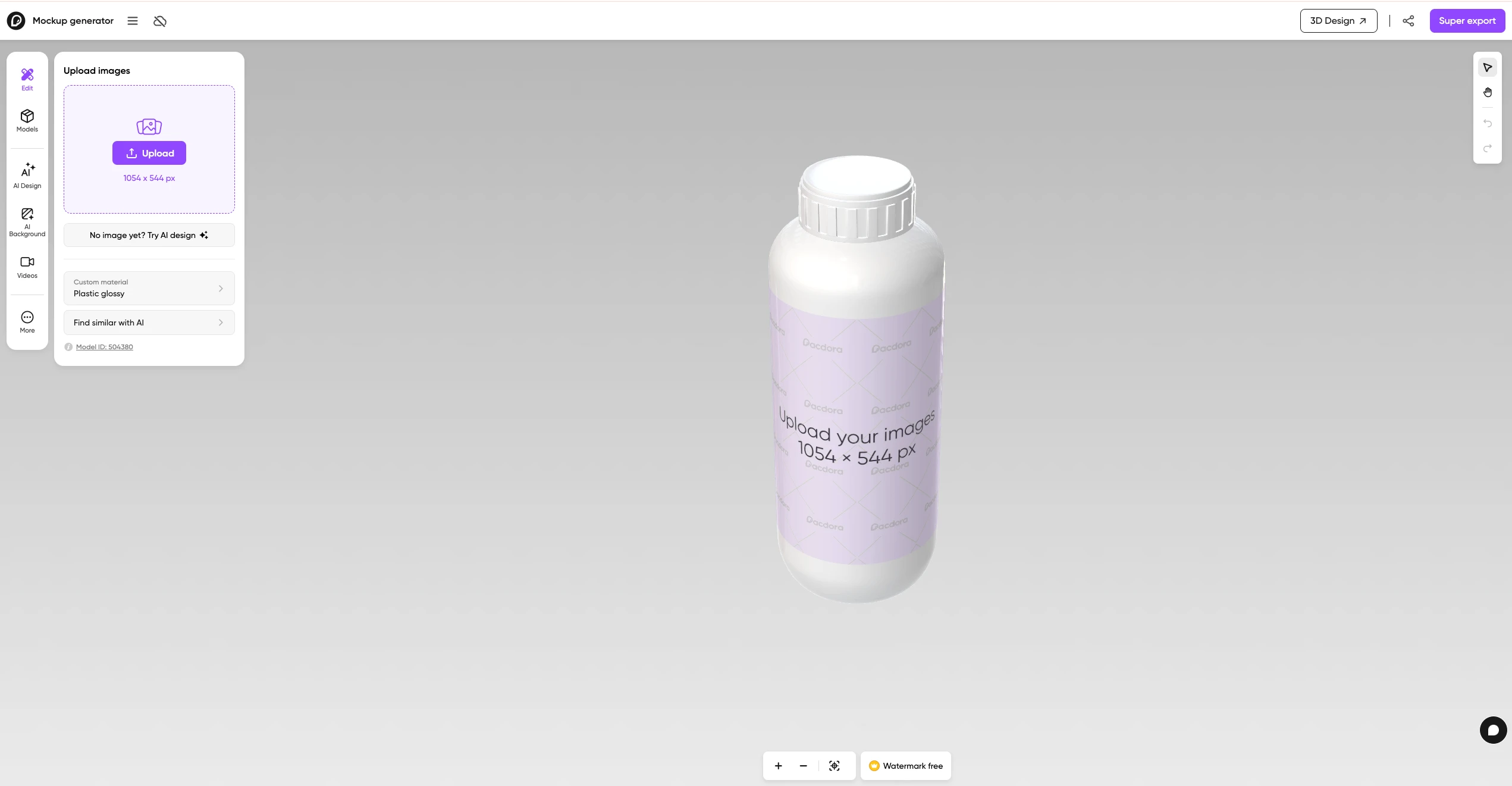 pacdora-mockup-generator-7tvltz.webp
pacdora-mockup-generator-7tvltz.webp
 My Experience: I've used Pacdora when I need to quickly explore a dozen different packaging concepts for an internal review. Its library is huge, and you can get a decent-looking mockup in seconds.
My Experience: I've used Pacdora when I need to quickly explore a dozen different packaging concepts for an internal review. Its library is huge, and you can get a decent-looking mockup in seconds. Key Strength for Packaging: Its primary advantage is an enormous library of existing mockup templates that dramatically accelerates the early creative and conceptual stages of a project.
Key Strength for Packaging: Its primary advantage is an enormous library of existing mockup templates that dramatically accelerates the early creative and conceptual stages of a project. Strategic Limitation: It is an ideation tool, not a professional finishing tool. The editor is basic, the lighting is not physically accurate, and most importantly, it lacks ray tracing. The results are good for a quick mockup but are not suitable for final, photo-realistic commercial hero shots that brands demand.
Strategic Limitation: It is an ideation tool, not a professional finishing tool. The editor is basic, the lighting is not physically accurate, and most importantly, it lacks ray tracing. The results are good for a quick mockup but are not suitable for final, photo-realistic commercial hero shots that brands demand.
At a Glance: Which Packaging Renderer is Right for You?
| Platform | Best For | Key Packaging Advantage | Workflow Type | Pricing Model |
|---|---|---|---|---|
| Realishot | Modern Collaborative Teams | End-to-End Workflow & Figma Link | Cloud-Native | Freemium / Subscription |
| KeyShot | Solo Designers & Speed | Desktop Real-time & Material Accuracy | Desktop | Perpetual / Subscription |
| Substance Stager | Deep Adobe Users | Seamless Adobe Ecosystem Integration | Desktop | Subscription |
| Boxshot | Beginners & Standard Shapes | Parametric Shape Library | Desktop | Perpetual / Subscription |
| Pacdora | Rapid Ideation & Mockups | Massive Mockup Template Library | Cloud-Based | Freemium / Subscription |
Why Packaging Rendering is a Unique Challenge
Now that we've seen the tools, let's appreciate the specific problems they are built to solve. This isn't just about making a pretty picture; it's about overcoming complex technical hurdles inherent to packaging design.
 The Labeling Labyrinth: The heart of packaging design is the 2D graphic. The a single biggest friction point is accurately applying that flat design onto a 3D surface. A good tool must make this process painless.
The Labeling Labyrinth: The heart of packaging design is the 2D graphic. The a single biggest friction point is accurately applying that flat design onto a 3D surface. A good tool must make this process painless. The Material Maze: Packaging is a world of subtle and complex materials. We need to simulate everything from brushed aluminum and translucent frosted glass to the way light catches metallic foils, raised embossing, and glossy spot UV varnishes.
The Material Maze: Packaging is a world of subtle and complex materials. We need to simulate everything from brushed aluminum and translucent frosted glass to the way light catches metallic foils, raised embossing, and glossy spot UV varnishes. The Consistency Conundrum: Products rarely live alone. A shampoo bottle needs to look like it belongs to the same family as its matching conditioner tube and soapbox. A rendering tool must make it easy to maintain consistent lighting, colors, and branding across an entire product line.
The Consistency Conundrum: Products rarely live alone. A shampoo bottle needs to look like it belongs to the same family as its matching conditioner tube and soapbox. A rendering tool must make it easy to maintain consistent lighting, colors, and branding across an entire product line. The Speed Imperative: The market moves fast, and clients demand quick revisions. The time it takes to go from a design tweak to a new, photorealistic visual for client review is a critical measure of a tool's value.
The Speed Imperative: The market moves fast, and clients demand quick revisions. The time it takes to go from a design tweak to a new, photorealistic visual for client review is a critical measure of a tool's value.
FAQs for Packaging Design Rendering
1. What is the best way to handle complex labels with foils and embossing?
The key is using a physically-based rendering (PBR) material system. You'll typically use multiple texture maps: a color (or albedo) map for your design, a metallic map to tell the renderer which parts are foil, a roughness map for glossiness (like a spot UV), and a normal or bump map to simulate the raised effect of embossing. Tools like Realishot and KeyShot excel at this and have presets to simplify the process.
2. How can I ensure color consistency between my screen and the final printed package?
This is a classic challenge. The first step is to work on a color-calibrated monitor. Second, always use official brand color values (like Pantone, CMYK, or Hex) in your 2D design. While a rendered image (RGB) will never perfectly match a printed object (CMYK), starting with the correct color values gives you the closest possible digital representation and provides an accurate reference for your print vendor.
3. What's the difference between a simple mockup tool and a professional rendering software?
It comes down to light and realism. A mockup tool (like Canva or, to an extent, Pacdora) quickly applies your 2D image to a template with basic, pre-baked lighting. It’s fast and great for ideation. A professional rendering software (like Realishot, KeyShot, and Stager) simulates the actual physics of light. It uses techniques like ray tracing to calculate how light bounces, reflects, and refracts, creating images with true photorealism, accurate shadows, and lifelike material properties that are suitable for high-end marketing campaigns.
Conclusion: The Choice is The Workflow, Not Just the Tool
The discussion about the "best" packaging renderer has fundamentally changed. A perfect, photorealistic image is now just the price of entry. The real conversation—the one that decides which teams win and which fall behind—is about the entire workflow.
Desktop powerhouses like KeyShot are brilliant digital darkrooms for the solo artist. Rapid mockup tools like Pacdora are fantastic sketchbooks. But to thrive in today's fast-moving market, you need more than a darkroom or a sketchbook. You need an entire, connected studio.
This is where my recommendation becomes clear. As a designer who leads a team, the strategic advantage doesn't come from a slightly better render; it comes from a dramatically faster and more collaborative process. It comes from a platform that solves the entire problem, from 2D label to final client sign-off. For my team, that platform is Realishot. It combines the photorealistic quality of the best desktop tools with a cloud-native agility that the others simply cannot match.
Ready to revolutionize your packaging workflow? Start your free Realishot trial today and discover the power of collaborative, cloud-native 3D rendering.
